Abandoned Subway
Type: Level Design
Time Frame: 2 Weeks
Description: "The Abandoned Subway" is a level designed for a first-person horror game that was created in a two-week period with a team of five people. Drawing inspiration from games such as "The Evil Within 2" and "Resident Evil," the level serves as an introduction to the game's story and world. The level is designed to build and relieve tension while also guiding the player through the environment using techniques like guiding lines and framing. It is a linear level that aims to introduce the player to the game's world and atmosphere.
Goal: The objective of this game was to create a narrative-based game within a two-week time frame. As a member of the team working on the level, my task was to use environmental storytelling and various techniques to guide the player through the environment. Additionally, this project was my first opportunity to work on set dressing, so I made a significant effort to learn about the process and how best to transition from a whitebox to a fully-realized environment.
Tools: Unreal Engine 5, Adobe Photoshop
Level Showcase
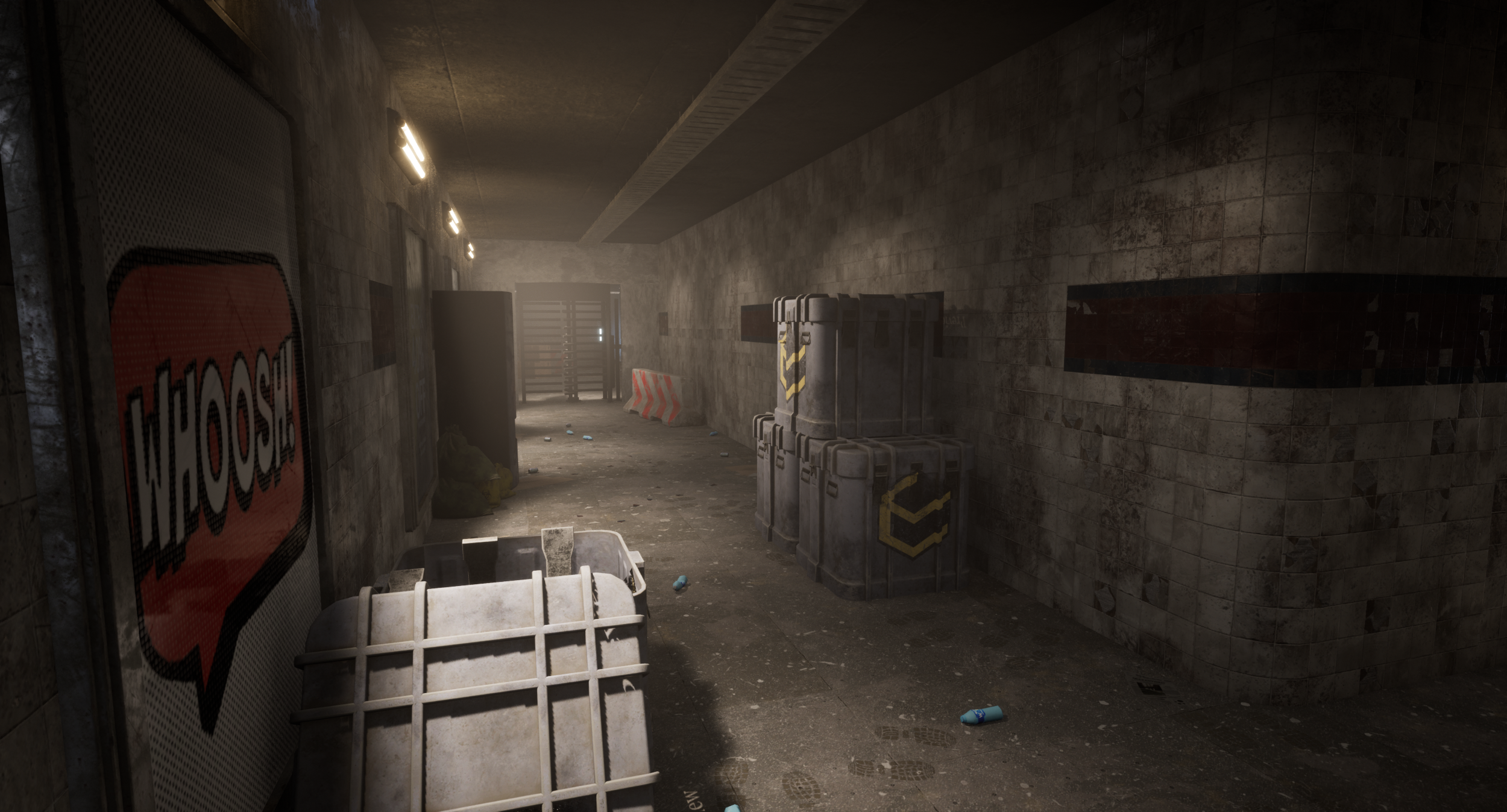
Final Images
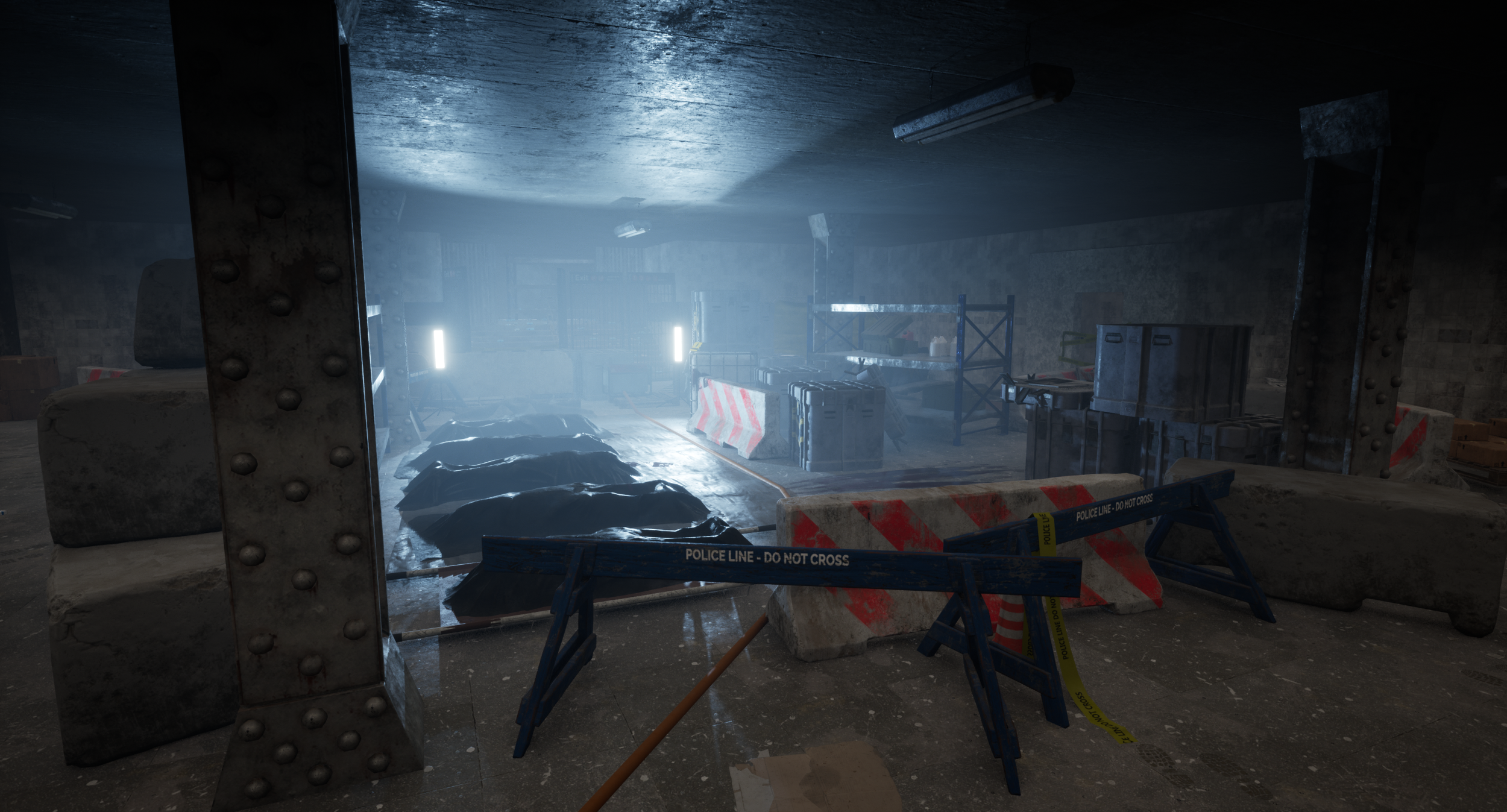
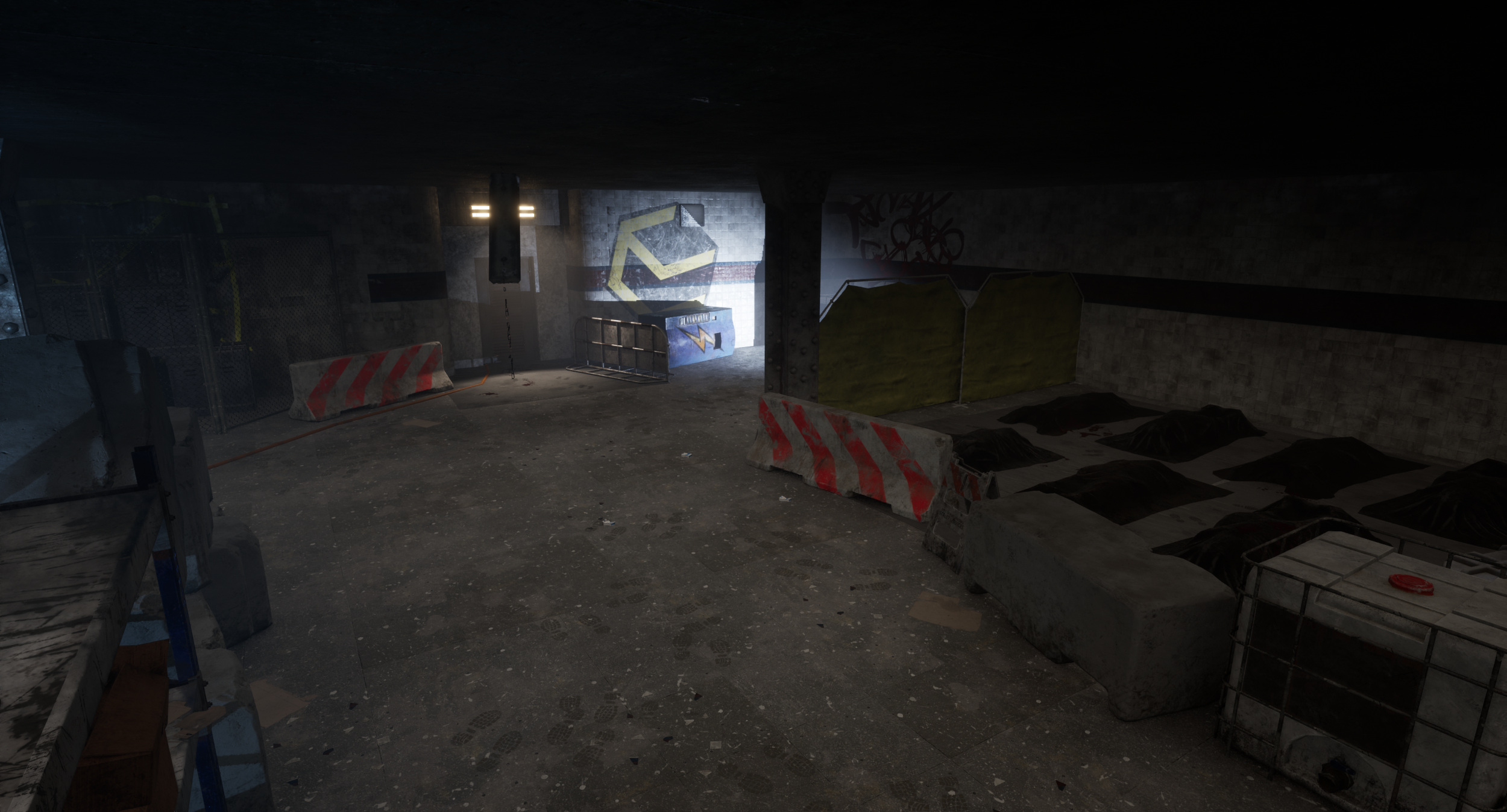
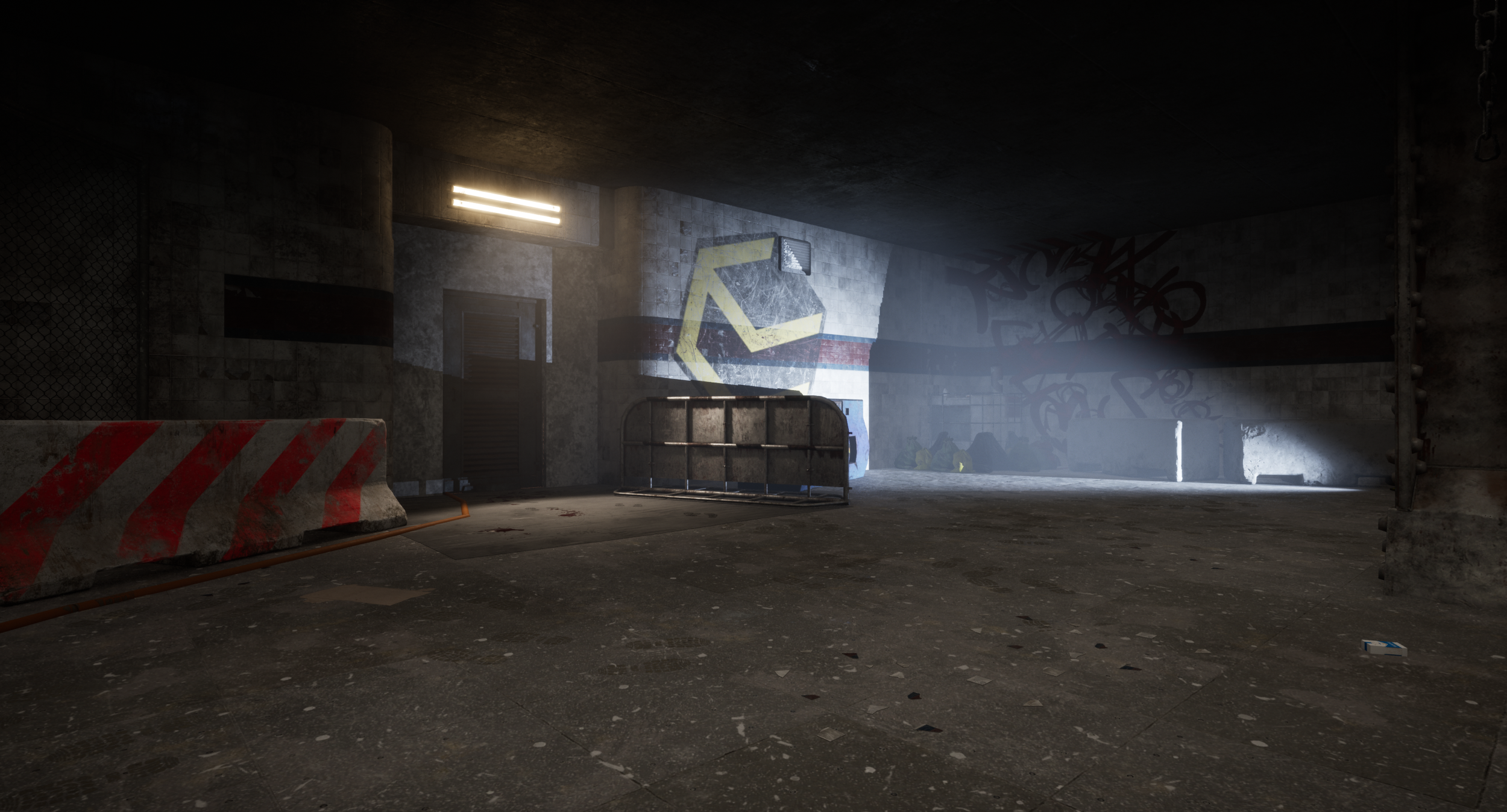
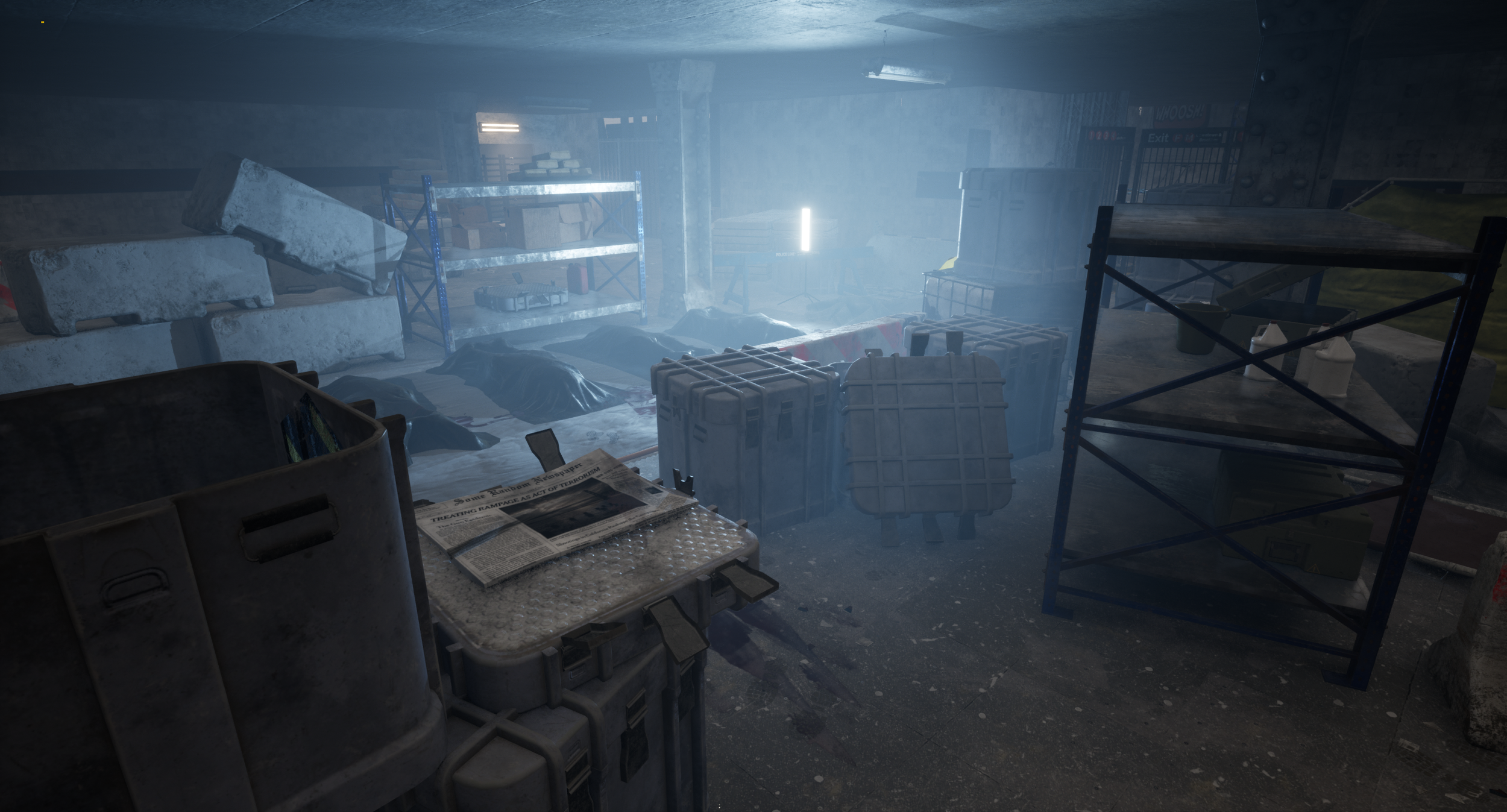
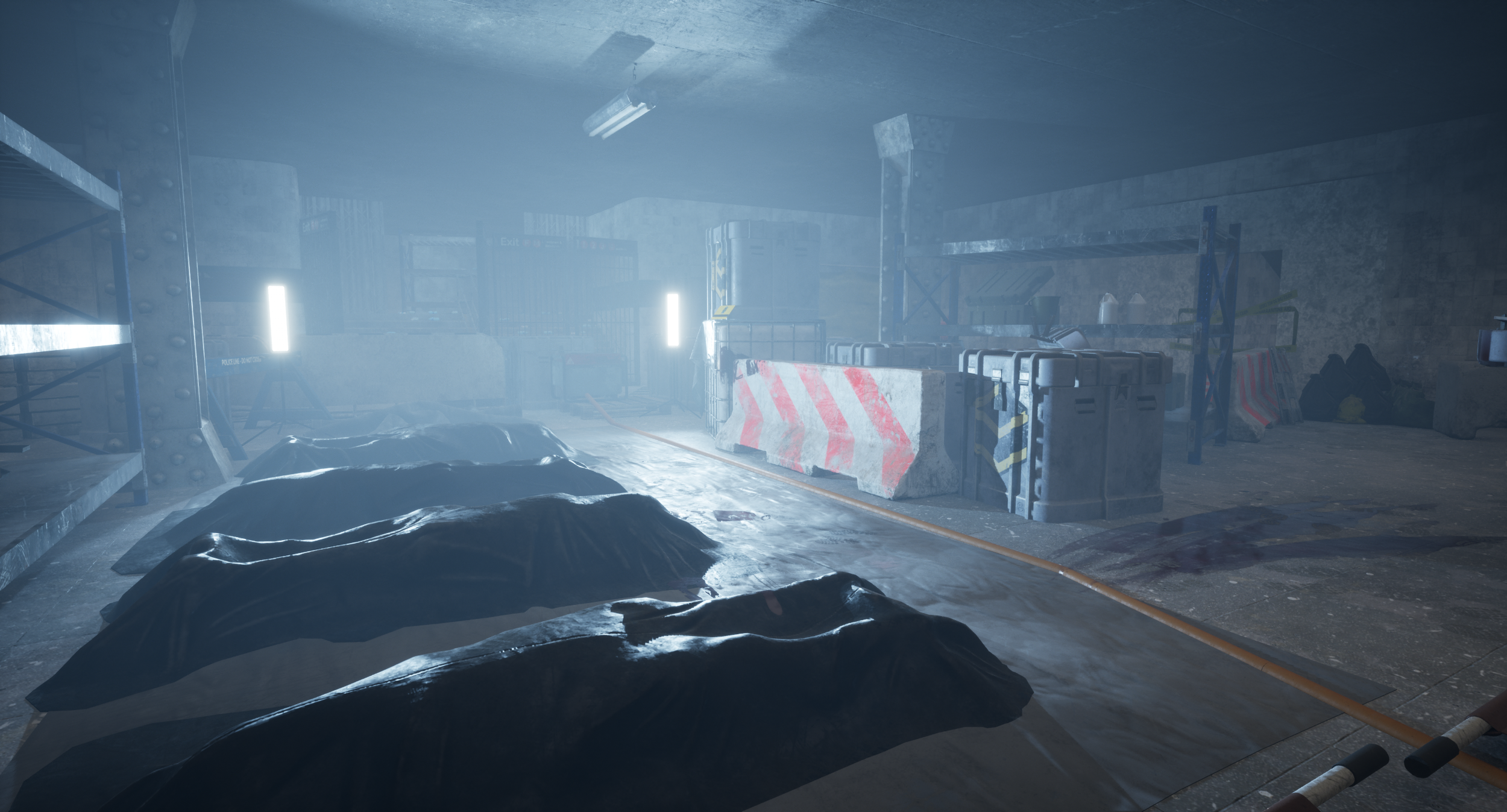
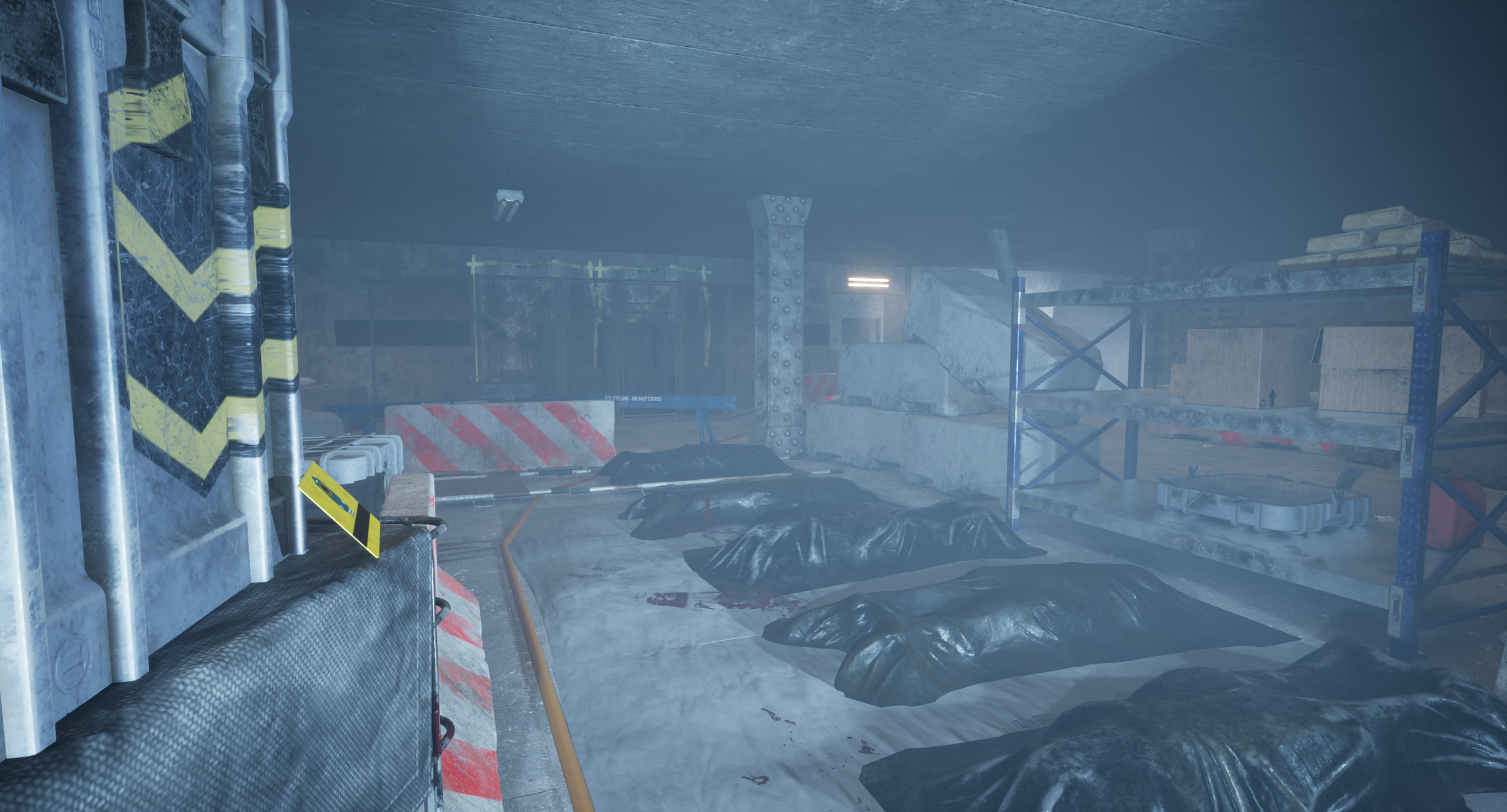
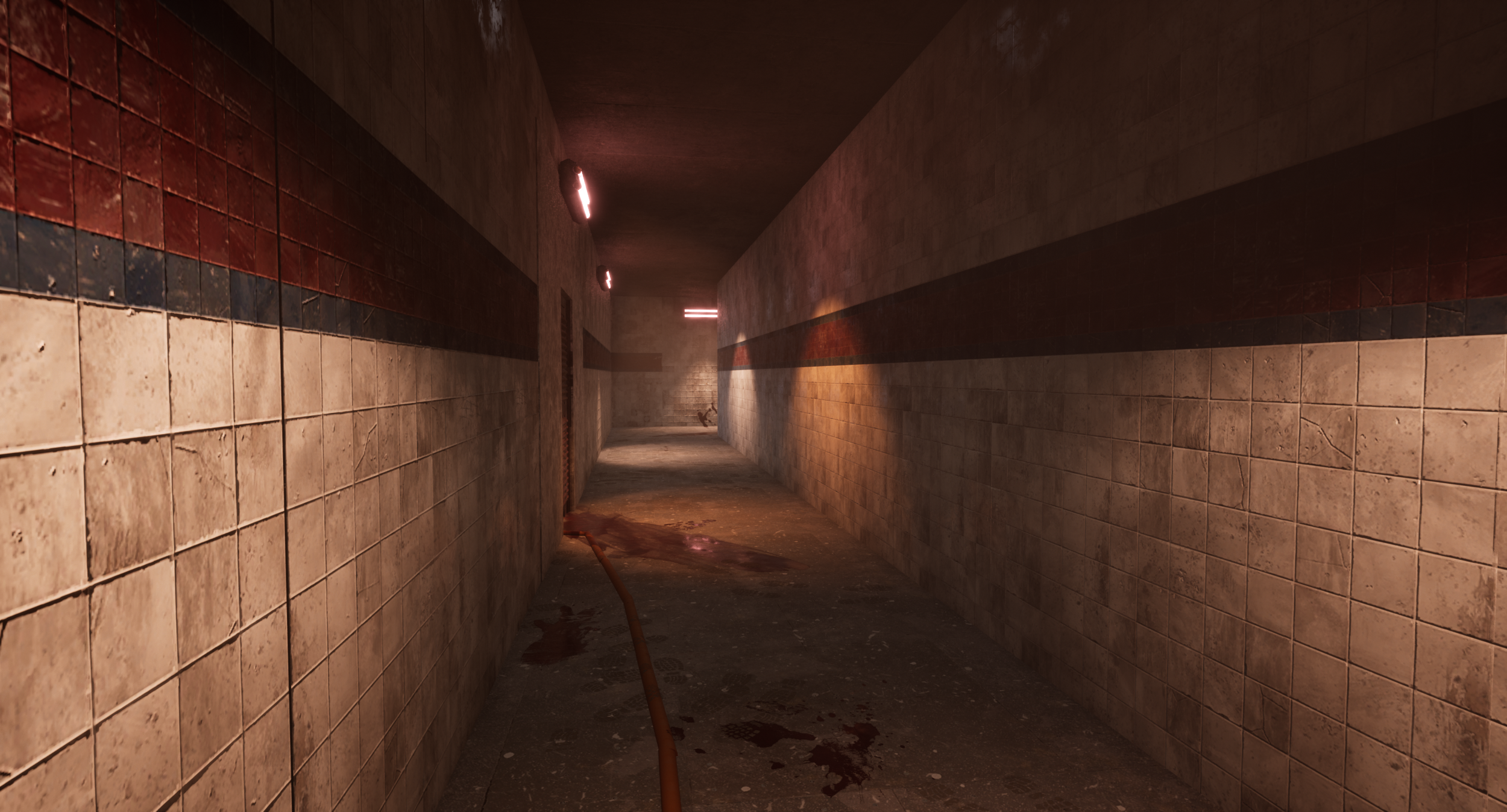

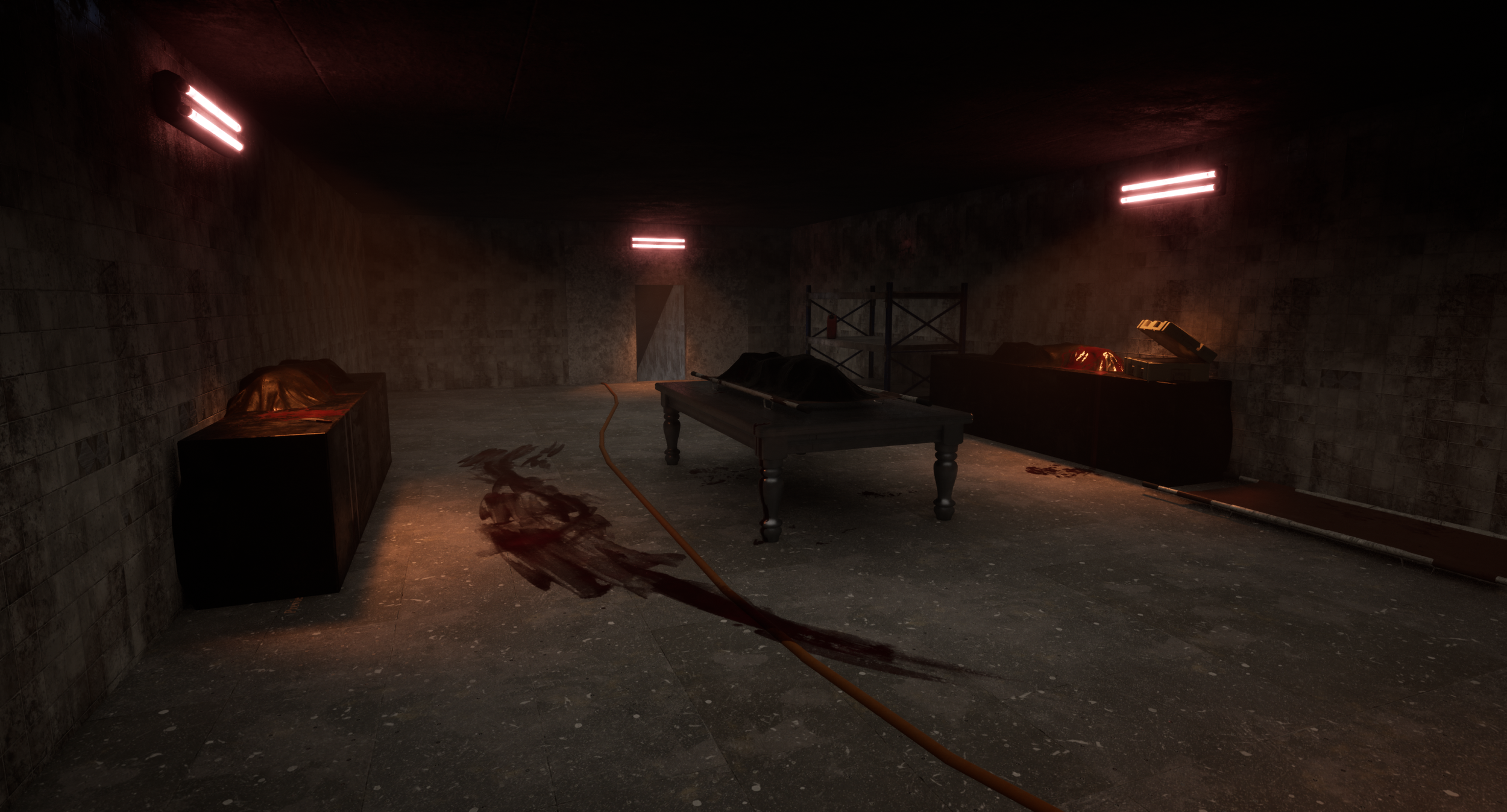
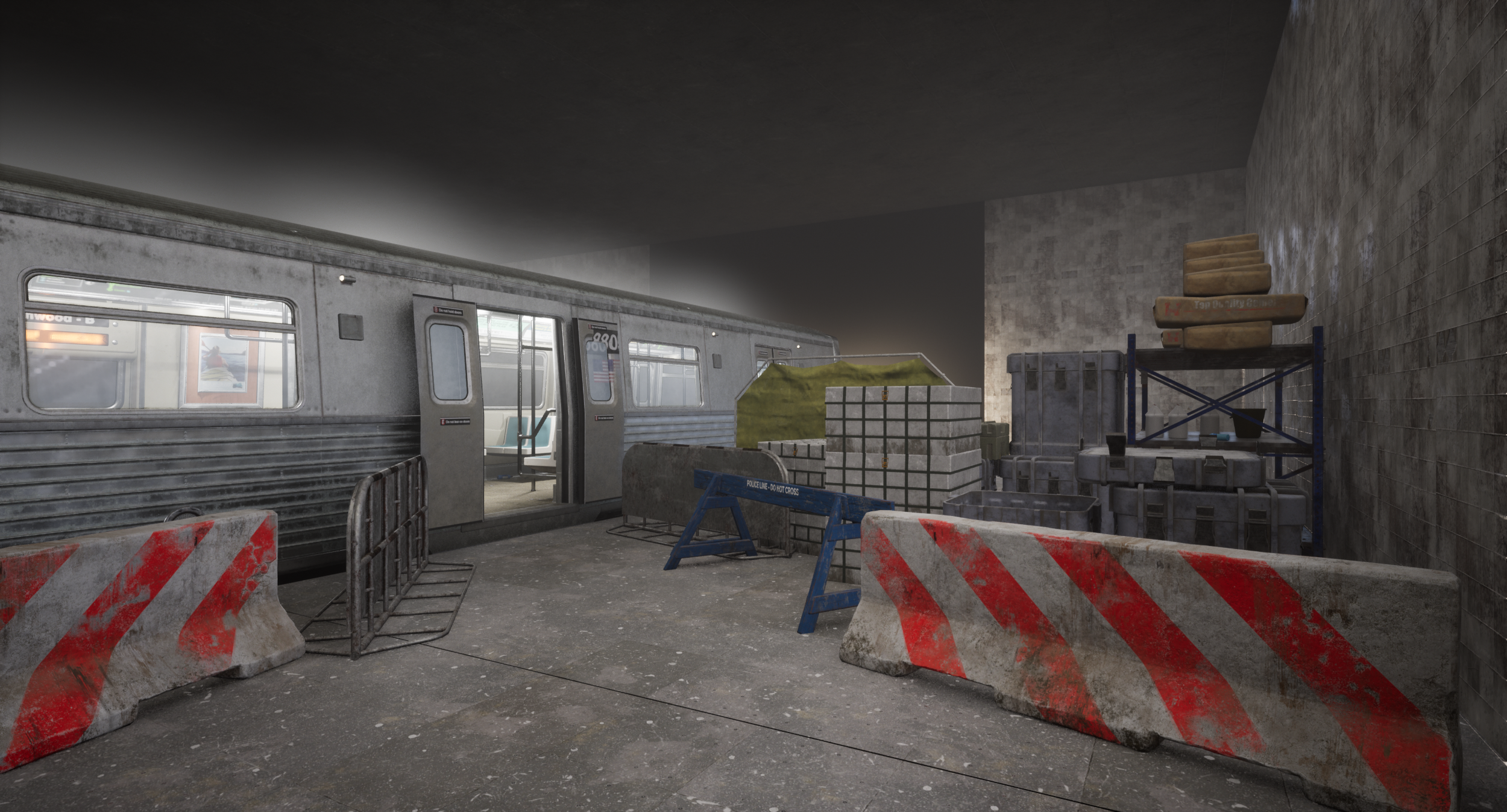
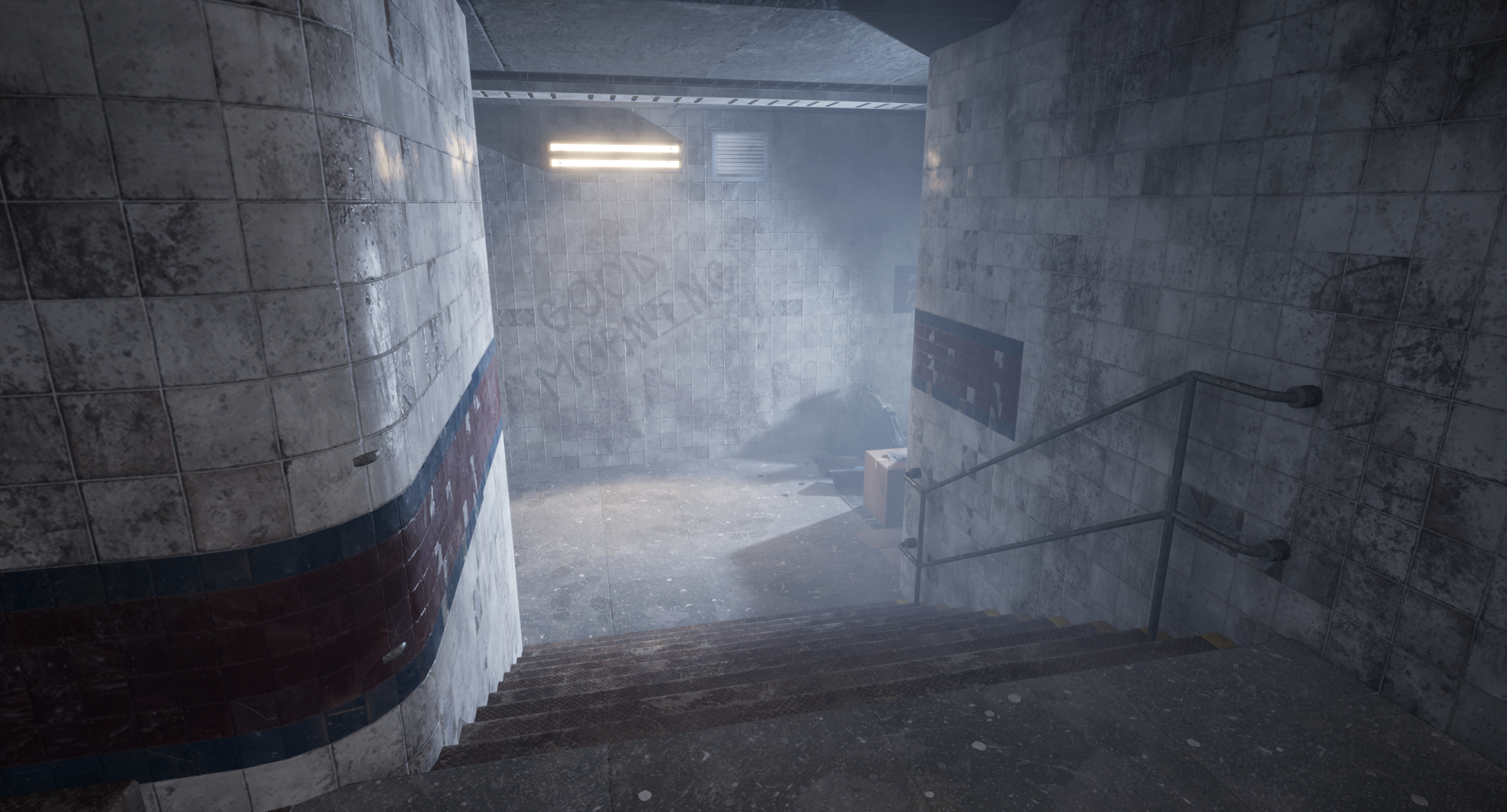
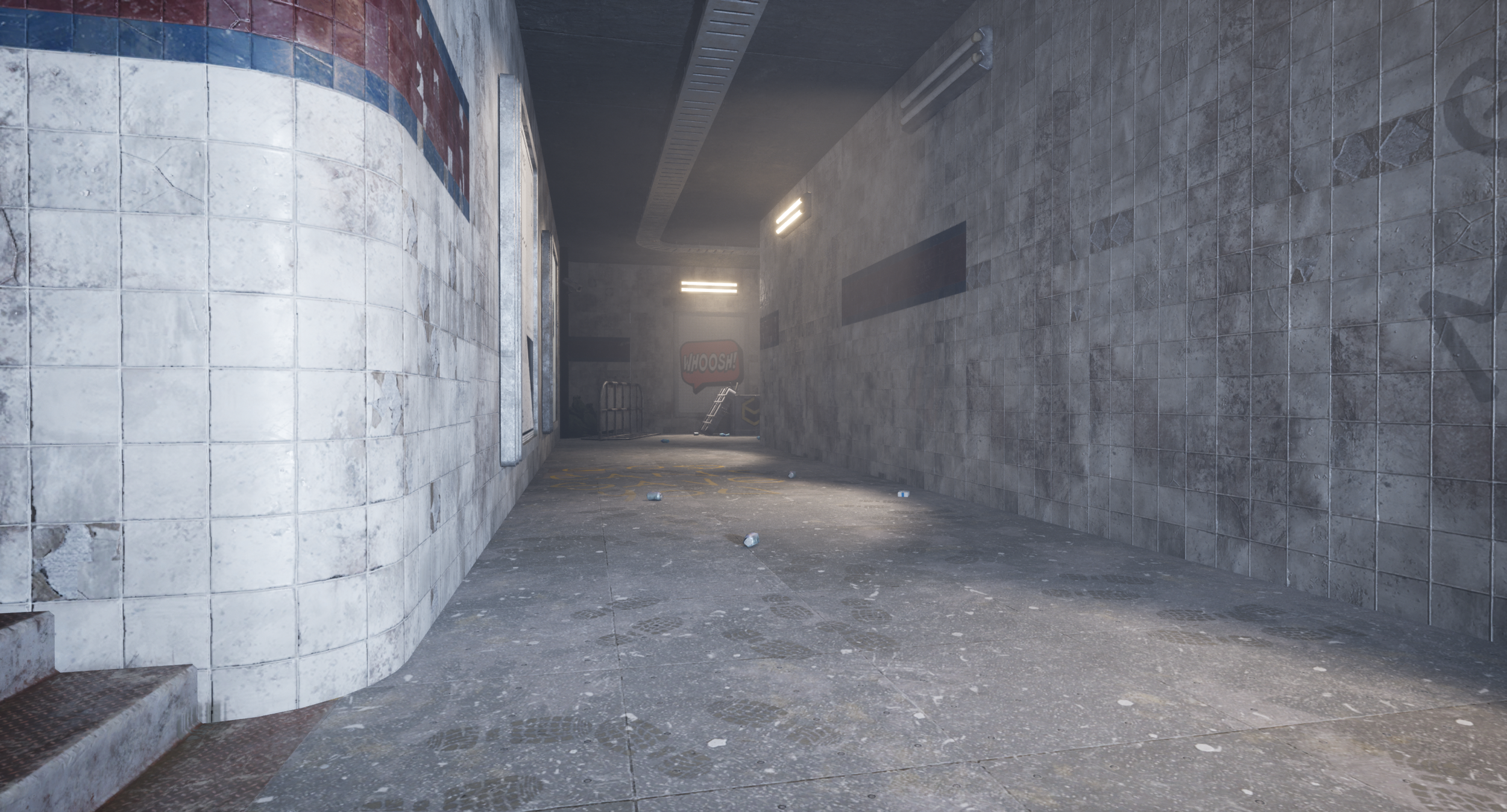

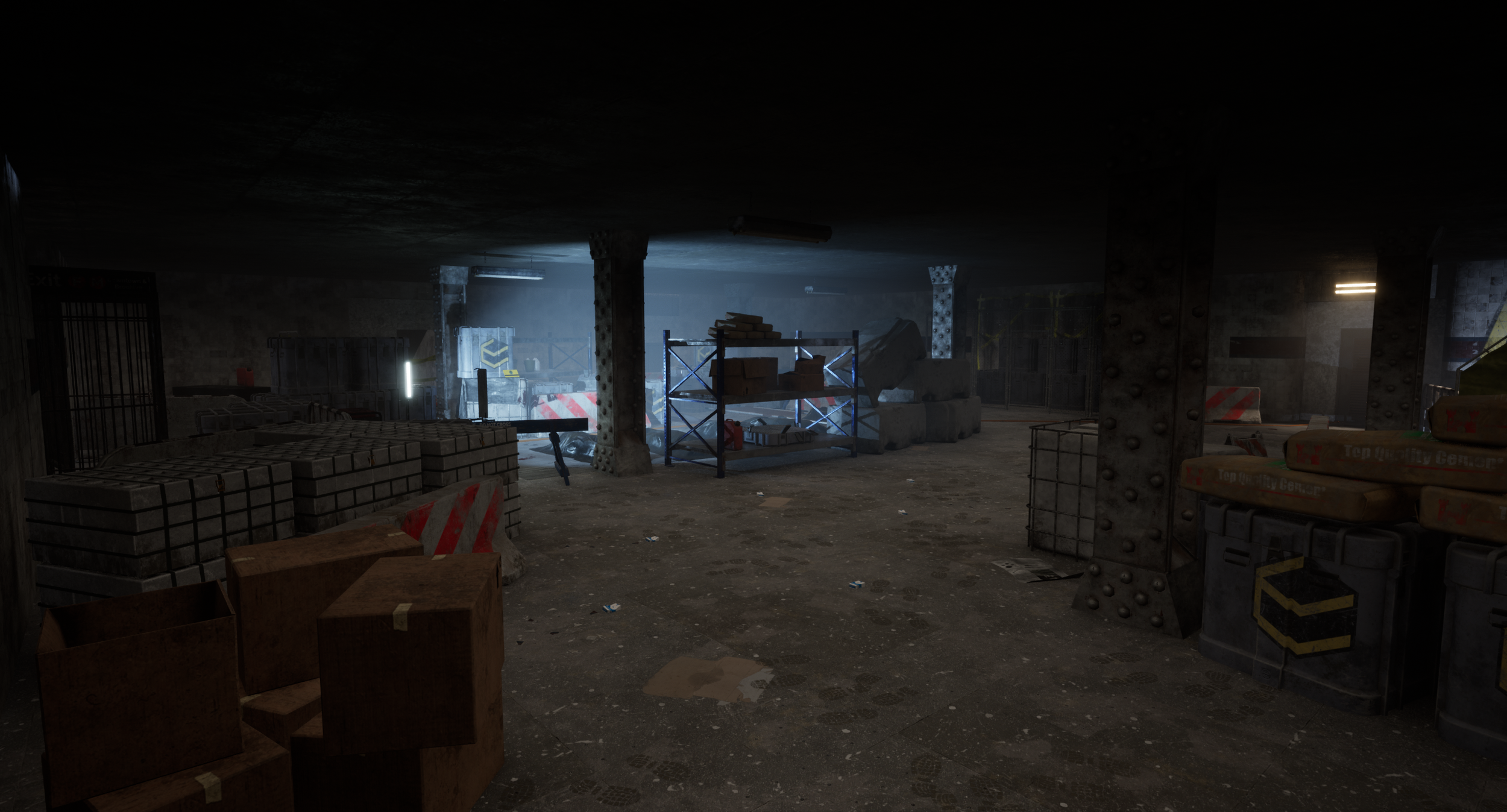

2D Layout and Concepting
The first step in designing this level was finding reference images and researching the genre of game that I and the team were planning to create. I compiled a PureRef board of reference images to get a feel for the final result of set dressing, as well as the types of lighting and assets used to create the desired player experience. I also played "The Evil Within 2" to gain a better understanding of the gameplay feel, since this was the closest match to our intended experience and not a genre I was particularly comfortable with. After getting a sense of the game's feel, I watched gameplay videos of the same levels and took notes on the layout and intensity of gameplay. This helped significantly with the pacing of the level.
For the level's aesthetic, we aimed for a realistic environment. After researching asset packs, we found a subway asset pack that fit the desired tone. Our goal was to suggest that an abandoned section of the subway had been repurposed, creating a feeling that things were off and a general unease for the player. Although the subway itself looked like a subway, the clutter in the environment and its layout suggested that it was no longer being used for its original purpose.
The first layout pass was designed to be quick and barebones due to the time frame. The focus was on ensuring that the layout was intriguing and that the player moved through the space at an appropriate pace. Given the game's genre, it was essential that the player moved slowly enough for us to build tension through sound and lighting. At this point, it became clear that the speed of the player character needed to be adjusted to achieve this goal. We initially experimented with more openness, but it became clear that doing so would risk removing an element of unease for the player. By the end of the whitebox stage, we aimed to create a smaller and more claustrophobic environment.
2D-Layout
Reference Board

Whiteboxing



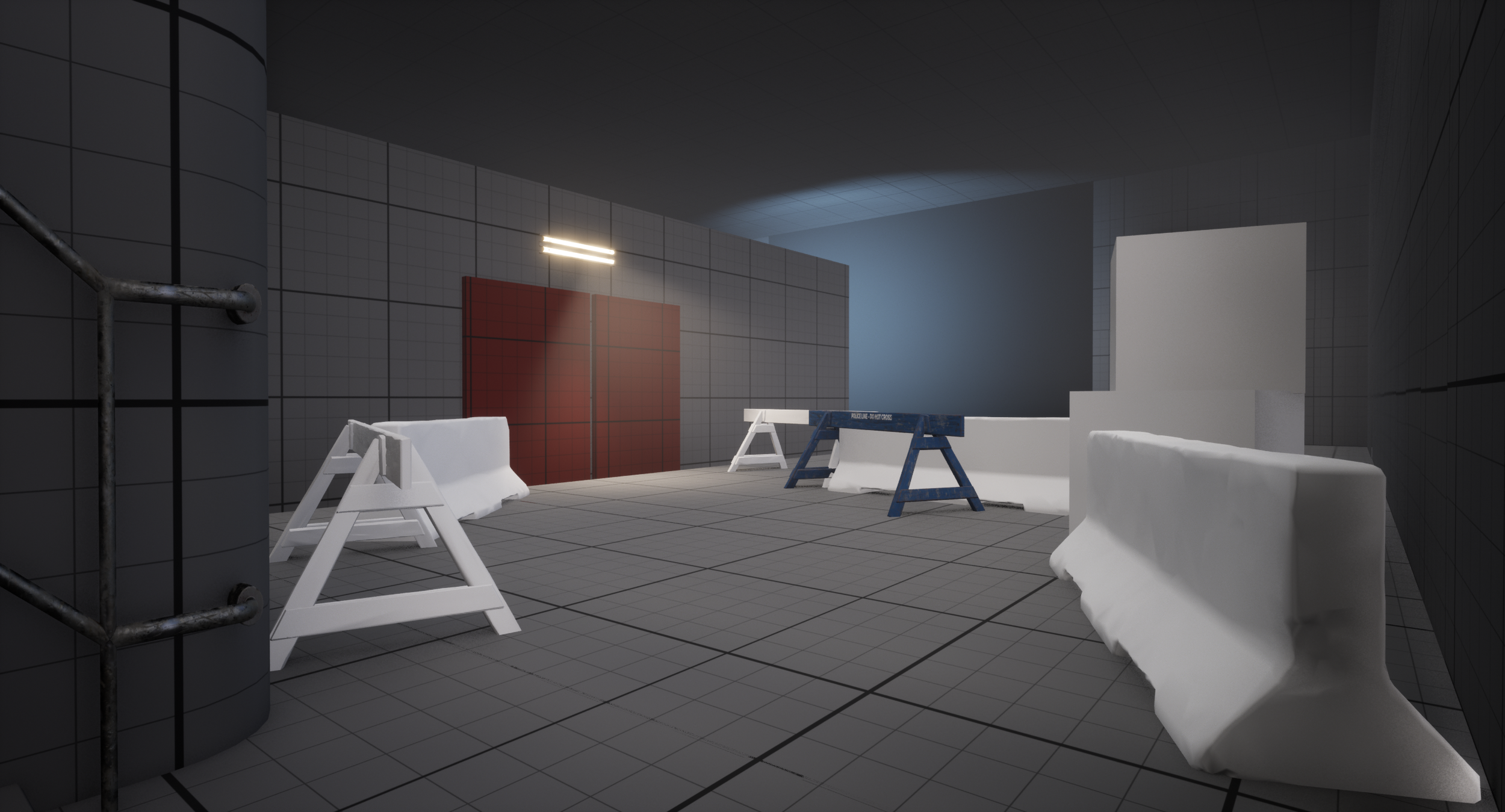








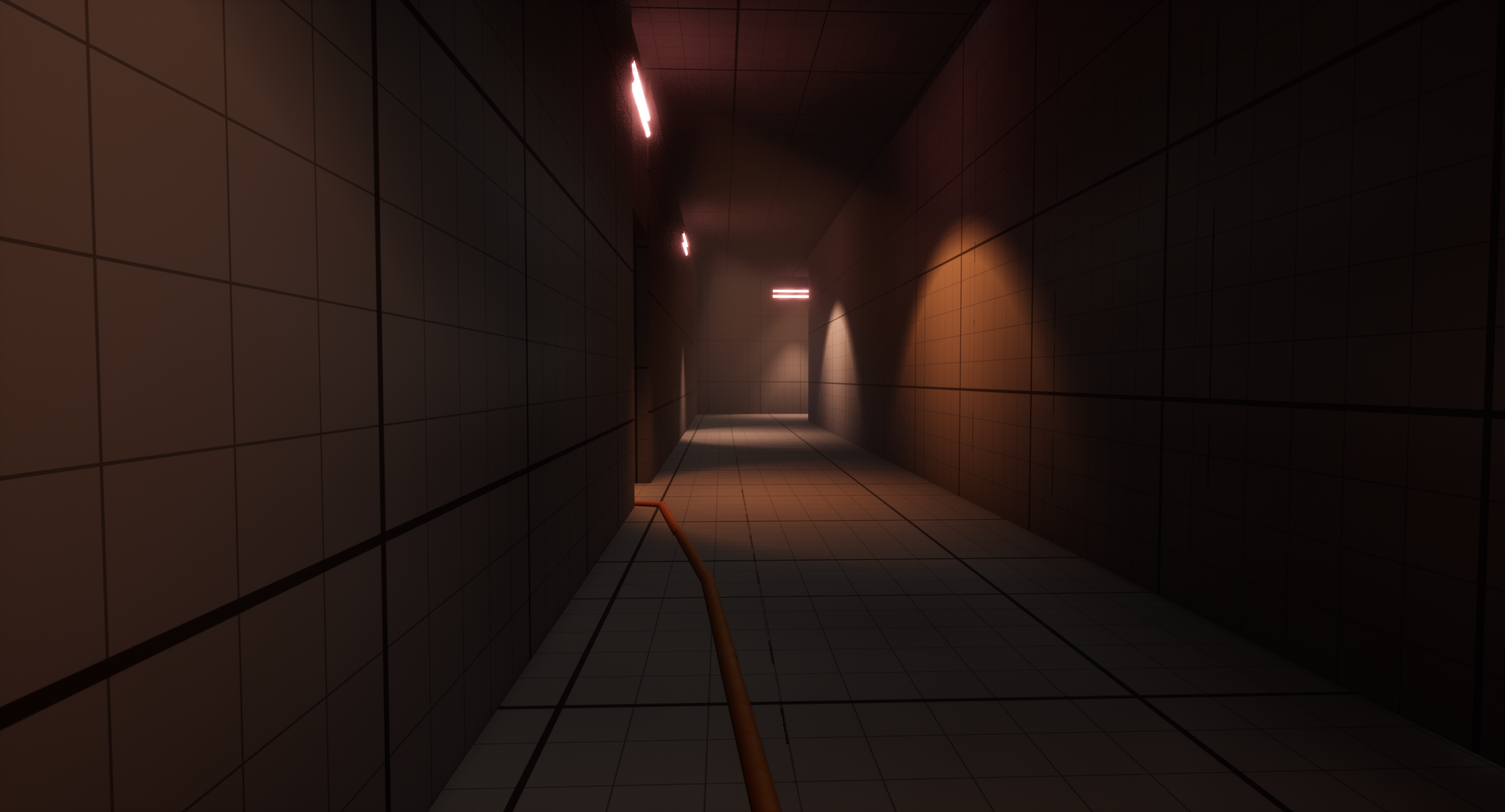



Retrospective
Retrospective
This project was one of my favorites I have gotten to work on, mainly due to its unique feeling and aesthetic. Designing for a gritty and realistic level has always been something I have been interested in, particularly in taking an abandoned and apocalyptic approach to set dressing.
The Abandoned Subway was my first opportunity to take on set dressing and lighting tasks alongside my whiteboxing. It taught me the importance of early consideration of the assets available and the necessity of establishing a proper scale for everything as soon as possible. During the set dressing process, it became apparent that slight adjustments to the whitebox were necessary to achieve the desired aesthetic for the level.
Fortunately, we used an asset pack to set dress the environment, making adjustments easy. However, when working with environment artists, I have learned to keep them updated throughout the level creation process. Having a shared vision for the level's outcome early on has proven beneficial to the final product. Engaging with them even during the concepting phase has helped us both ensure that we don't need to redefine what we had created later in the project.



